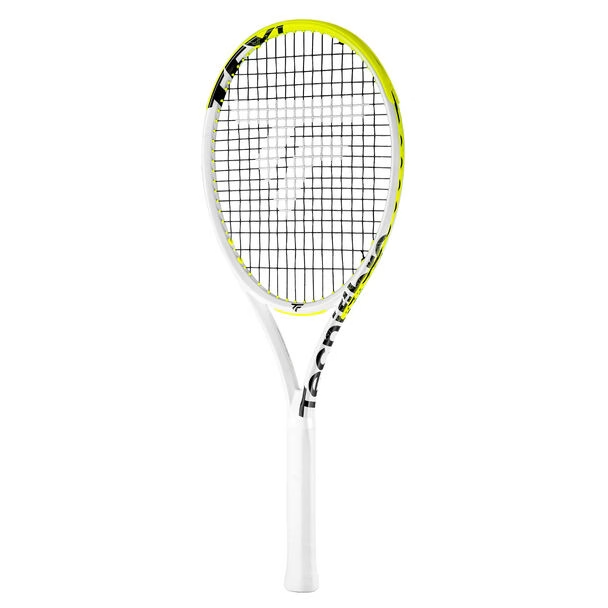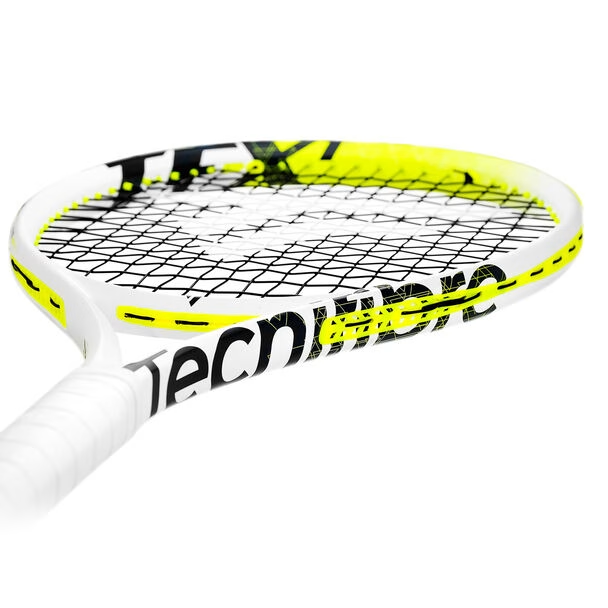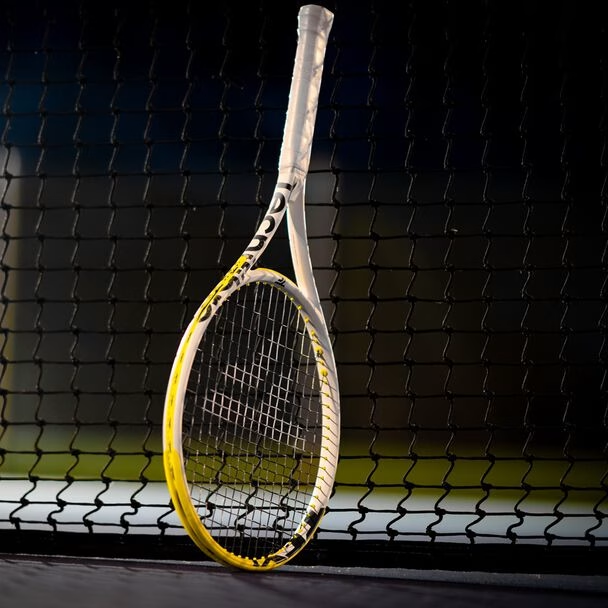
As someone who’s been obsessed with tennis since I could barely hold a racket, I’ve tried countless frames over the years, from old faithful like the Wilson Pro Staff to modern spin monsters like the Babolat Pure Aero. But lately, I’ve been diving into reviewing rackets that fly under the radar, and I was on TikTok the other day, and the Tecnifibre TFX1 caught my attention. I picked up the TFX1 300 (the 300g version) and took it through its paces on my local hard court.
Here’s my take — raw, honest, and from the heart of a tennis addict.
First Impressions

Out of the box, the TFX1 300 has a clean, futuristic look. What I like about it is that the racket doesn’t scream at you with neon paint like some other rackets, but the angular design and slightly beefier beam give off a modern, performance-driven vibe. A side note is that this racket does come unstrung, and at my local shop I was advised on what strings to add based on my game. So I strung mine with Tecnifibre Ice Code at 52 lbs, a control-oriented poly, which turned out to be a good choice.
Specs I Tested
- Head size: 100 sq in
- Weight: 300g (unstrung)
- Balance: 320mm (7 pts HL strung approx)
- String pattern: 16×19
- Beam width: 25/26/23 mm
- RA rating: Around 71
- Technology highlights: X-Damp (vibration-dampening system), Isoflex system (for consistent string-bed response)
What I Loved

1. Effortless Power
The first thing I noticed with the TFX1 was how easily the ball came off the strings. I’m not a massive hitter because my game is built around aggressive baseline play with controlled topspin, but this racket gave me a feeling of power without overhitting. It’s not as raw as the Pure Drive, but the power is definitely there. I would say that this did confuse me a bit in the beginning because when I volleyed some quick shots, the ball would fly off the face and land outside the lines. So I do recommend softening your wrist and grip when close to the net.
On serve, this translated into faster flat bombs and kickers that leapt off the court. I didn’t have to muscle the ball, which saved me energy in long matches.
2. Comfort is Legit
Tecnifibre’s X-Damp system is no gimmick. It really dampens harsh vibrations on off-center hits which really helps. I’ve had some wrist issues in the past, and this racket felt incredibly plush, even when I caught the ball near the frame. I can see this being a great choice for players with elbow or wrist sensitivity.
3. Forgiving Sweet Spot
Thanks to the Isoflex technology (which supposedly adjusts string stiffness across the pattern), the sweet spot feels large. I am not a professional so the bigger sweat spot is amazing and really helps me focus on placement of the ball on the court as opposed to focusing on where to hit the ball on the face. Miss hits were rare, and when they did happen, the racket didn’t punish me too much. Some balls either flew far or just died and landed short. But the shots that I did hit well really gave me a lot of confidence especially when it came to fast-paced baseline rallies.
What I Didn’t Like

1. Lacks a Bit of Feel at Net
While the TFX1 is a monster from the back of the court, it’s not quite as connected at the net. Volleys felt either muted and floaty or springy, especially compared to something like a Wilson Blade or Yonex VCore Pro. The X-Damp system, while great for comfort, sacrifices some feel. I found myself second-guessing delicate touch shots, which is what I said in the beginning. It will take some time for you to get used to the net play with this racket.
2. Maneuverability in Defensive Situations
At 300g and with a slightly thicker beam, the frame can feel sluggish in tight defensive exchanges. It was especially noticeable when I was stretched wide or needed to flick a passing shot, I felt the lack of whippiness if that makes sense. A more head-light balance or weight customization might help here.
3. Stiffness Might Be Too Much for Some
Even with the dampening system, the racket has an RA rating around 71, which puts it on the stiffer side. If you’re a junior or someone with arm concerns, demo it first. I always suggest demoing a racket before fully committing to it. The racket is comfy for what it is, but there’s no mistaking that it’s a modern power racket.
Who Is This Racket For?
- Intermediate to advanced players who want easy power and comfort
- Baseliners who play with controlled aggression
- Doubles players looking for solid serves and confident baseline shots (but may want more feel at net)
Pro Players Using Tecnifibre TFX1

Interestingly, the TFX1 isn’t commonly seen on the ATP or WTA tour. Tecnifibre’s more popular tour models are the TFight and TF40 series, used by players like Daniil Medvedev (TFight 305 RS) and Iga Swiatek (TFight RS 300 customized).
That said, Tecnifibre is pushing the TFX1 more toward the club and competitive amateur market for players who want top-tier performance without the punishment of a pro stick.
Customization
I have not customized mine just yet but I have seen people add a bit of lead tape at 3 and 9 o’clock to stabilize the hoop. Another customization is that some players have added a leather grip to shift the balance more head-light.
Final Verdict: 8.5/10
The Tecnifibre TFX1 is a powerful, comfortable, and modern frame that gives you easy access to depth and pace. It’s forgiving and confidence-boosting, especially from the baseline. If you’re a player who thrives on dominating from the back of the court but needs a bit more comfort than the usual power frames provide, this might be your next weapon.
Just don’t expect pinpoint precision or surgical net play — that’s not its forte. But for most recreational and competitive club players, this racket brings serious value.
If you’re on the fence, definitely demo it. And try stringing it with a softer poly or hybrid to balance out the stiffness and amp up the feel.


